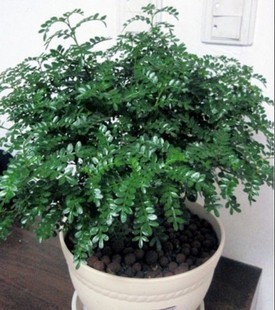How does Brazilian wood take root and propagate by burying sand buds?
The rooting propagation of Brazilian wood buried in sand is actually a method of cutting propagation. Brazilian wood is transported from the south to the north, and most of it is finished with leaves, soil and pots. The phenomenon of damaged leaves is easy to occur in the process of transportation, which affects the ornamental effect. The transportation is inconvenient and the cost is too high. If you change the Brazilian stake and destroy the buds to take root in the north, it can be transported in batches without fear of damaging the leaves on the way. After being transported to the north, sand can be buried to destroy buds and take root for propagation, and the specific operation methods are as follows:
(1) first cut the 1.5-meter-long Brazilian wooden pile into 75 cm and 45 cm short piles as needed, and seal the top with wax to prevent water loss.
(2) build a plastic film shed in the greenhouse, under which three layers of bricks are built, and the bricks are poured with coarse sand and watered to dry and wet.
(3) burying short Brazilian wood piles in wet sand and keeping the environmental conditions of 35 ℃ and 90% humidity in the shed, Brazilian wood can drill fat new buds in about 40 days.
(4) after the new buds of Brazilian wood take root, gradually remove the plastic film shed, cool for a period of time can be maintained in the basin. This kind of Brazilian wood, which is buried in sand and takes root, is of good quality and thrives, and is very popular with enthusiasts.
How to propagate and cultivate Brazilian wood
Brazilian wood Chinese name fragrant dragon blood tree, alias Brazilian iron tree, Brazilian millennium wood, Phnom Penh fragrant dragon blood tree, is a plant of the genus Liliaceae. Evergreen trees, neatly shaped, tall and straight stems. The leaf cluster is born at the top of the stem, 40-90 cm long and 6-10 cm wide, the tip is slightly obtuse, curved into a bow, with bright yellow or milky stripes; the leaf margin is bright green, undulating and glossy. The flowers are small. Yellowish green, fragrant.
Brazilian wood is native to the tropics. Like sufficient light, high temperature, high humidity environment, shade-resistant, dry-resistant, in the bright scattered light and the dry environment of the northern room, grow well.
Brazilian wood is propagated by cutting method. The branches pruned from the branches with poor plant shape were cut into 5-10 cm segments and cut upright or recumbent on the cutter with coarse sand or vermiculite as the medium. Water culture can also be used to promote its rooting. The specific method is to cut off the stem, into the water, the cross section to be smooth, the upper end to prevent water evaporation can be coated with wax, which is particularly important in the dry season, the lower end is immersed in water 2-3 cm, the temperature is above 25 ℃, water and containers should be kept clean. The top with leaves can take root faster, and it can take root in 3-4 weeks, while the stem segment can take root slowly, sometimes it takes 2-3 months to grow new roots and buds. Management technology: as long as the temperature and other conditions are suitable, Brazilian wood can grow all year round.
Summer high temperature, need proper shade, winter room temperature should not be lower than 5 ℃, but it is best to make it dormant in winter, dormancy temperature is 13 ℃, the temperature is too low, leaf tip and leaf edge will appear chloasma. Brazilian wood in the room should be in a place with plenty of light. If the light money is too weak, the markings on the leaves will turn green, the basal leaves will yellowing, and lose the ornamental value. Water quality should be kept clean during the cultivation period. Water should be watered twice a week to prevent tree trunks from rotting. When it is hot in summer, spray can be used to improve the air humidity and spray water on the leaves to keep it moist.
Brazilian wood in the growing period should be appropriate extra-root topdressing, with thin nutrient solution sprayed leaves, once every semimonthly. After several years of cultivation, the plant is too tall or the leaves of the lower part of the stem fall off, and when the plant shape is poor, it should be pruned. Change the basin or soil every early spring. Potted Brazilian wood, if the environment is not suitable, there will be red spiders, thrips, shell insects and other harm. In addition, excessive ventilation, drought, irregular watering and excessive fertilization can cause leaf tip scorch.
Brazilian wood is quite popular indoor large potted flowers and trees, especially in the wider living room, study, living room display, elegant style, simple, and with southern flavor. It is a world-famous new generation of indoor foliage plants with beautiful and neat plant shape.
How to propagate Brazilian wood, the diagram of propagation method / cutting survival rate is 100%.
As a kind of foliage plant introduced from abroad, Brazilian wood can be said to be loved by flower friends in recent years. It is not only good-looking, but also has amazing effect of purifying air and beautifying home, so it has been propagated in large numbers. Different plants have different methods of reproduction, so how does Brazilian wood reproduce? Let's go with the editor to take a look at the illustration of the breeding method of Brazilian wood.
1. How to propagate Brazilian wood, cuttings / striping / sowing

As a common foliage plant, the breeding method of Brazilian wood can be said to be very simple, as long as it is careful to make it amazingly beautiful. However, it is not easy to breed Brazilian wood yourself. According to the inquiry, there are three propagation methods of Brazilian wood: cutting, ramet and sowing, of which cutting is the most commonly used. Let's take a look at the specific operation.
II. Illustration of propagation methods of Brazilian wood
(1) Cuttage propagation of Brazilian wood.
When it comes to the propagation of Brazilian wood, cutting propagation is the most commonly used. According to the editor's inquiry, the cutting propagation of Brazilian wood can also be divided into two types: columnar cutting and twig cutting.
1. Columnar cuttings of Brazilian wood.
① cuttings: choose a thick trunk with a diameter of 6-10 cm as cuttings. However, it is OK to choose a trunk of more than 10 centimeters, but to keep the trunk fresh, the color of the skin should be light yellow.
② substrate: according to the growth habits of Brazilian wood, cutting substrate can choose river sand, vermiculite or moss. The depth of the matrix is about 30 centimeters. Remember to disinfect it before cutting.
③ cuttage: insert the cuttings into the substrate with a depth of about 10-25 cm. Of course, the depth is mainly related to the degree of firmness. if the height of the cuttage reaches more than 1 meter, it can be fixed by other main styles in order to make the cuttage firm.
④ maintenance: water the soil in time after cutting to keep the soil moist and avoid the sun around noon. New buds can be seen in about a month. When the new buds grow to 5 cm to 10 cm high, they can be planted.
2. Twig cuttings of Brazilian wood.
The twig cuttings of Brazilian wood are combined with pruning. In order to control the height of Brazilian wood, the cut branches (extension: the pruning method of Brazilian wood) can be used for cutting. When cutting, you can choose horizontal and vertical cuttings, keep the room temperature at 25-30 ℃, and new roots can grow in about a month. Note: in order to avoid diseases and insect pests of Brazilian wood, all kinds of soil container tools should also be disinfected before cutting.
(2) other breeding methods of Brazilian wood.
In addition to cutting, the propagation method of Brazilian wood can also be propagated by high branch crimping (complex operation and low survival rate). And Brazilian wood will bear fruit after flowering, and then seeds will be left behind, so Brazilian wood can also be sown and propagated. However, it is generally difficult to get mature seeds of Brazilian wood, so sowing and reproduction is not very useful.
Generally speaking, the propagation of Brazilian wood, whether it is cutting or dividing or sowing, can survive, but what is suitable for family reproduction is still cutting. Of course, the method is dead, people are alive, we can according to the actual situation, choose the method to breed. With regard to the breeding methods of Brazilian wood, the editor has introduced this, hoping to give you some help.
- Prev

Family maintenance of Brazilian wood
Scientific name and family Brazilian wood alias Brazilian iron, fragrant dragon blood tree, millennium wood. The genus Dracaena of the tequila family. Native to southwestern Africa. The common cultivated varieties are divided into middle spot, Phnom Penh, tricolor, rainbow, silver thread and so on according to the stripes of different leaves. At present, the most common tree on the market is the middle spot fragrant dragon blood tree.
- Next

How to propagate and cultivate Brazilian wood
Brazilian wood Chinese name fragrant dragon blood tree, alias Brazilian iron tree, Brazilian millennium wood, Phnom Penh fragrant dragon blood tree, is a plant of the genus Liliaceae. Evergreen trees, neatly shaped, tall and straight stems. The leaf cluster is born at the top of the stem, 40-90 cm long and 6-10 cm wide, with a slightly obtuse tip and curved into an arch.
Related
- Fuxing push coffee new agricultural production and marketing class: lack of small-scale processing plants
- Jujube rice field leisure farm deep ploughing Yilan for five years to create a space for organic food and play
- Nongyu Farm-A trial of organic papaya for brave women with advanced technology
- Four points for attention in the prevention and control of diseases and insect pests of edible fungi
- How to add nutrient solution to Edible Fungi
- Is there any good way to control edible fungus mites?
- Open Inoculation Technology of Edible Fungi
- Is there any clever way to use fertilizer for edible fungus in winter?
- What agents are used to kill the pathogens of edible fungi in the mushroom shed?
- Rapid drying of Edible Fungi

